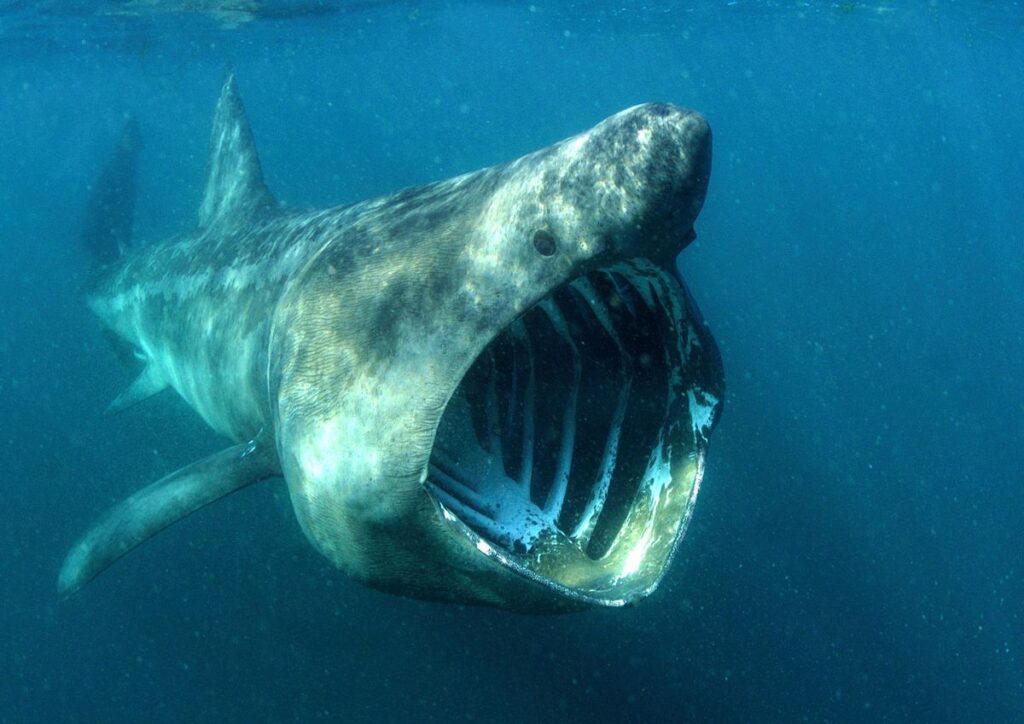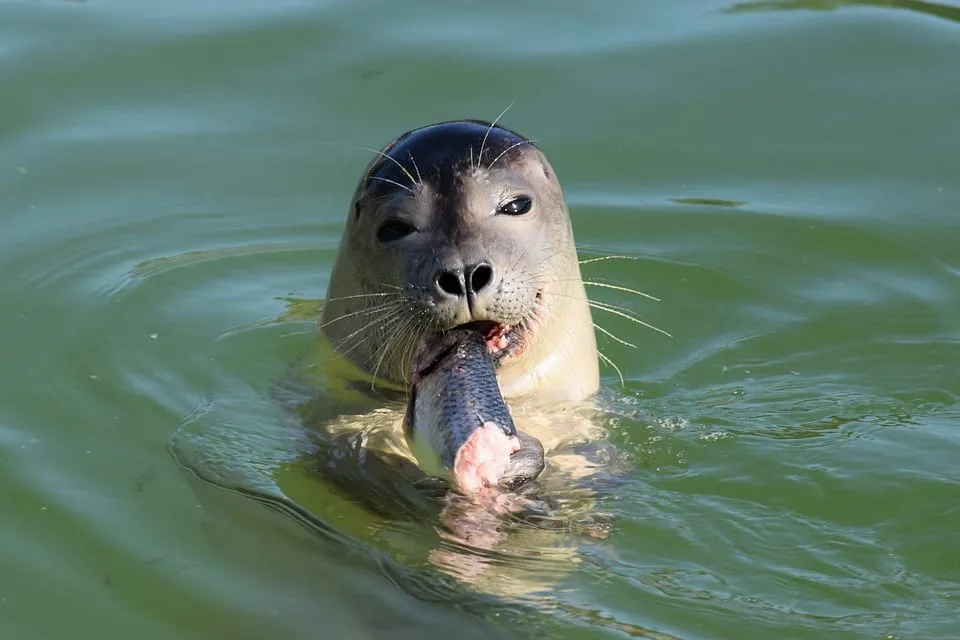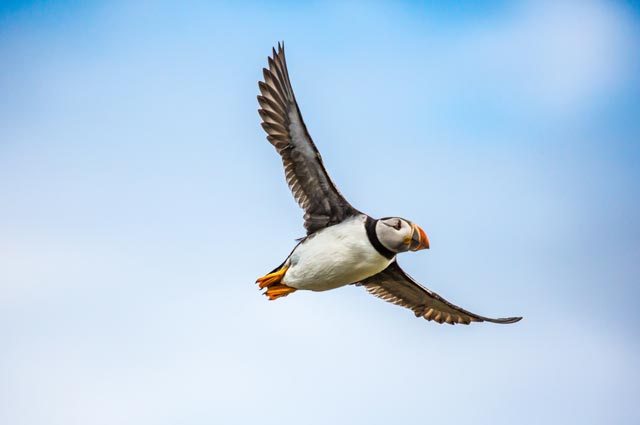On your Padstow Sealife Safari we will take you along the Camel Estuary and out into the Atlantic Ocean, which is home to a vast array of marine wildlife. Prepare yourself to search for some of Cornwall’s beautiful wildlife from Dolphins to Seabirds!
Grey Seals
Everyone’s favourite, the grey seal, can be spotted basking on rocks or popping their heads above the water. These curious mammals are one of Cornwall’s favourite, being spotted all round the Cornish coastline.
High tide for grey seals is feeding time, when they hunt in the kelp for fish and squid, using their whiskers to help detect their prey and catching it in their sharp teeth. Low tide you may well find them hauled out on the rocks, basking in the sun and getting some rest.
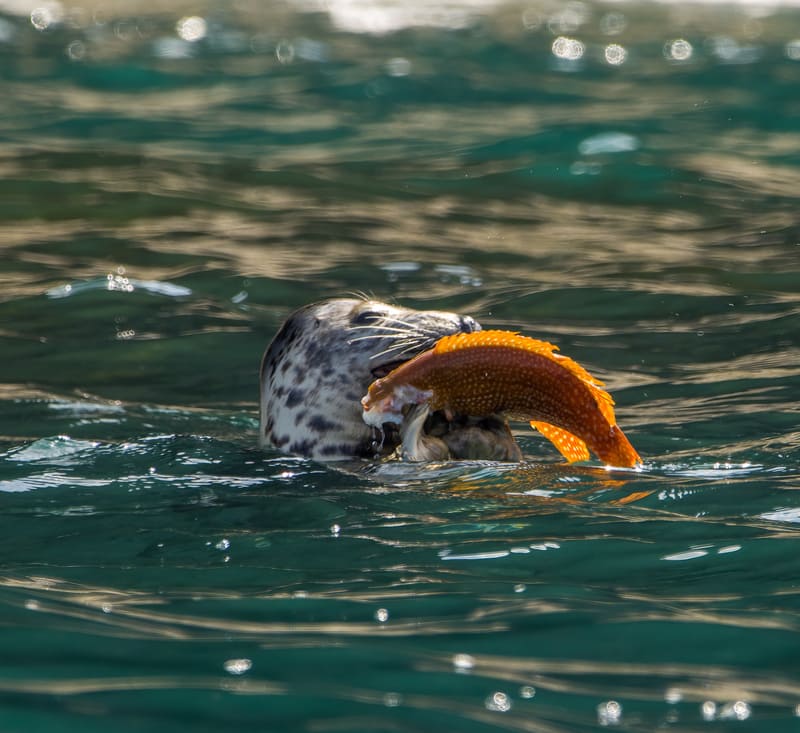
Common Dolphins
Common dolphins, as their name suggests… are very common in our waters, and the most common dolphin species we see. They are known for their acrobatic performances, leaping out of the water and bow riding with boats when in a playful mood.
Just like us, common dolphins are very social creatures, often found in large pods playing, hunting and travelling together. Being inquisitive and curious, they often approach boats to investigate and play.
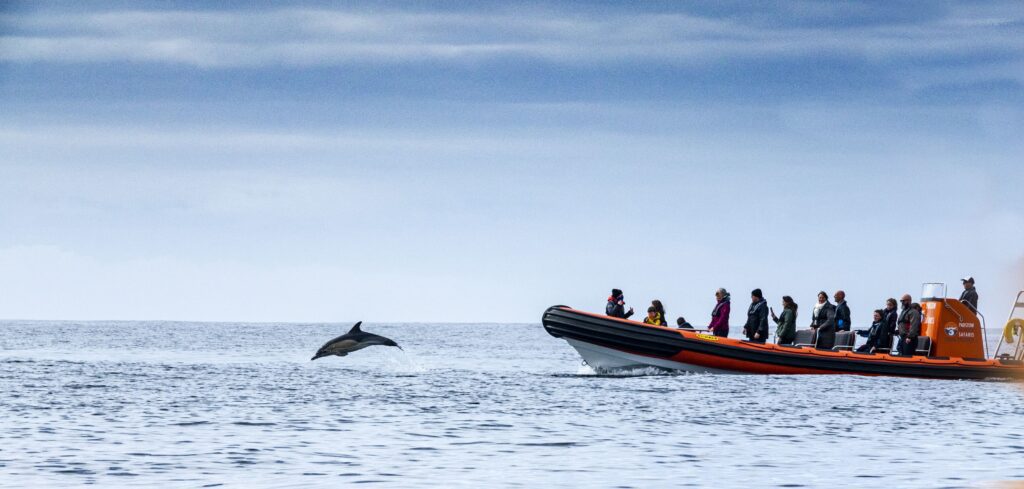
Harbour Porpoises
Harbour porpoises look very similar to dolphins and can be mistaken for one another in the water, but belong to different cetacean families. Dolphins are generally bigger with a longer body and beak and a taller, wave-shaped dorsal fin. Harbour porpoises are smaller with a blunt beak and a short, triangular dorsal fin.
Porpoises are shyer than dolphins, usually alone or in smaller pods and tend to avoid interactions with boats. Harbour porpoises are often spotted inshore in shallower waters (hence their name) but can also be found further offshore if there is an abundance of food.
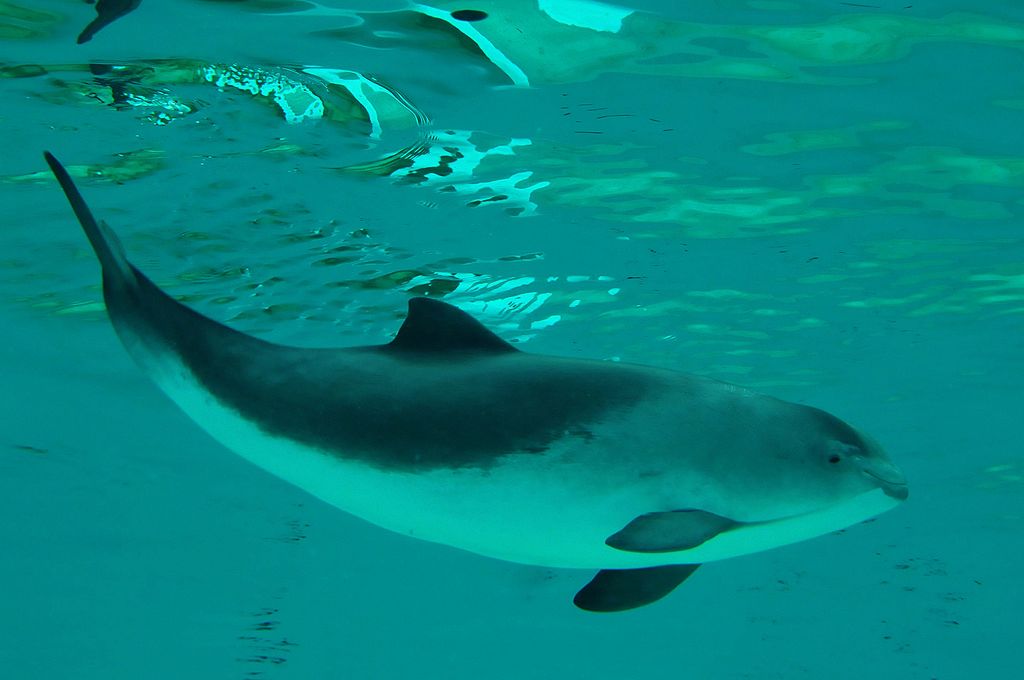
Puffins
We have special dedicated puffin trips to spot these magical birds when they nest in the spring and early summer. Every year from mid-April to mid-July they return to nest on a nearby island affectionately known as ‘Puffin Island’! These beloved seabirds can be spotted popping in and out of their burrows, flying around the island and bobbing on the water between dives to gather fish to feed their ‘pufflings’.
Puffins are noticeable by their vibrant beaks and rapid wing beats as they fly past at speed.
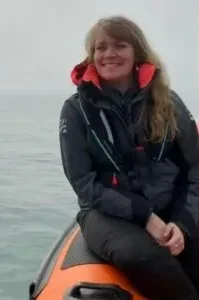
Anna: Wildlife Guide
‘My favourite animal to see is the Puffin. The Atlantic Puffin is such a beautiful and intelligent little bird. They are the only known wild seabirds to use tools! They have been documented to pick up little sticks to use to scratch themselves. We get to see the puffins during their breeding season (mid April-mid July) but early morning is the best time to see them!’
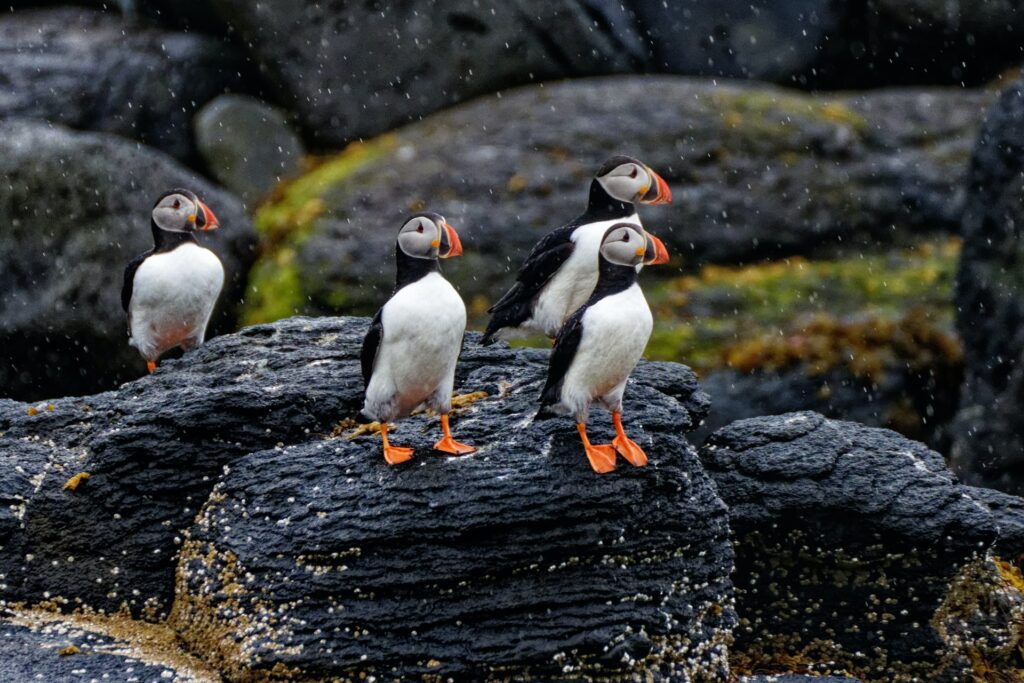
Northern Gannets
Northern Gannets are one of the most distinctive seabirds with their striking white plumage, black wingtips and yellow heads. When they are feeding, they can plummet from up to 30 metres in the air down to depths of 30 metres underwater to catch fish and the occasional squid.
They’re one of the largest bird species we have in Cornwall. With no breeding sites in Cornwall, we tend to see them out at sea either alone or gathering together when there is a good opportunity to feed, sometimes resulting in a feeding frenzy!
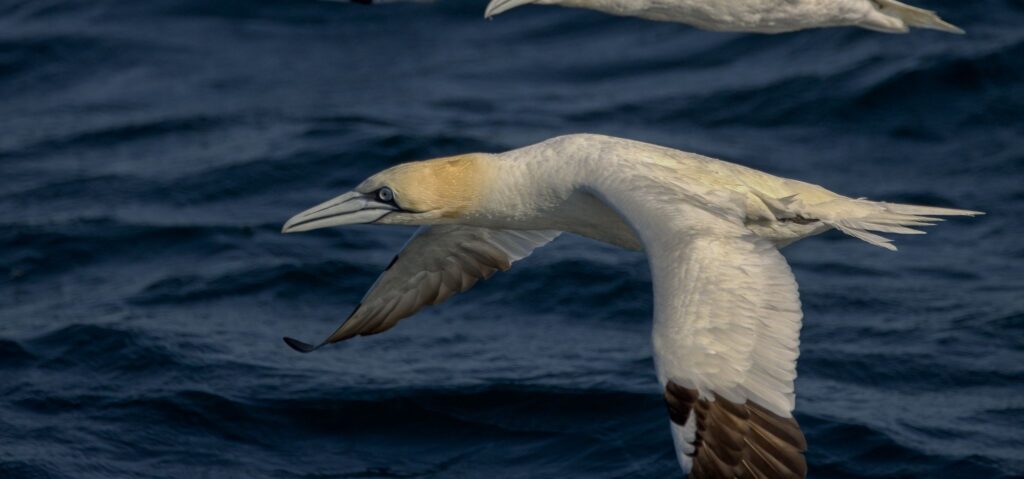
Risso’s Dolphins
Risso’s are one of the lesser seen dolphins in Cornwall, tending to stick to deeper water offshore hunting for squid. However, occasionally they travel inshore which can give us some great views of this slightly more illusive but distinctive species.
They can easily be identified by their pale skin which gets marked and scratched easily through social interactions and wrestling with their prey, making their skin appear scarred and white.
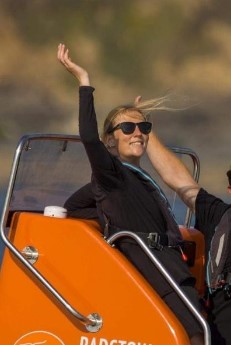
Vicki: Wildlife Guide
‘I love Risso’s dolphins because their bodies are covered in scars, which means every individual dolphin is completely unique! Most of these scars are from their food, which they mainly hunt at night using a method of suction feeding. We don’t see them very often as they spend most of their time in deep waters off the edge of the continental shelves, so it’s very exciting when we do get a sighting!’
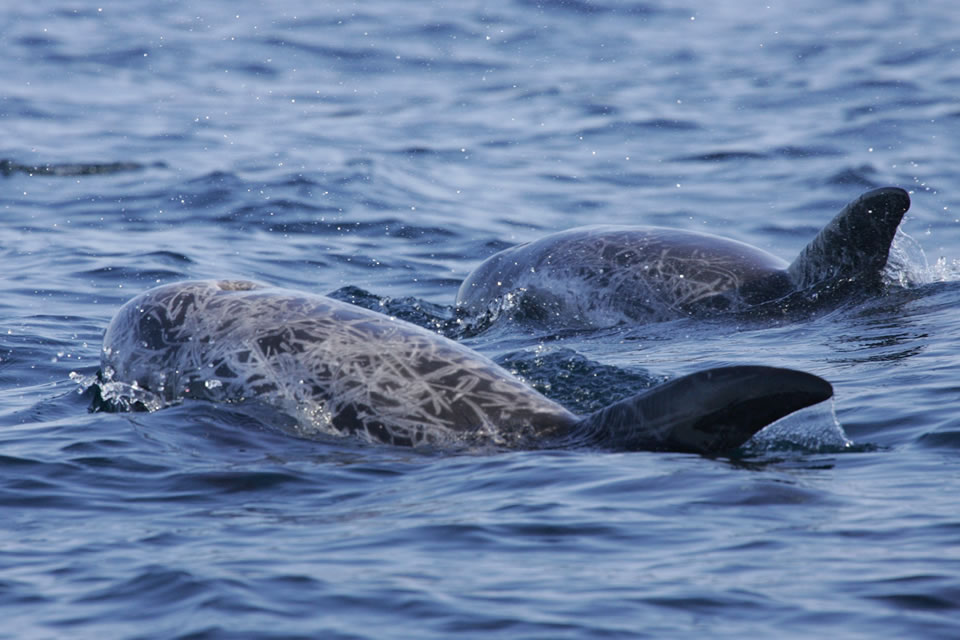
Minke Whales
One of the smallest species of whale in our waters and, although one of our more rare sights, although sightings have been increasing in recent years off our Cornwall coastline. Minke whales usually travel alone but multiple whales may be spotted in areas where fish is abundant.
We can see minke whales at any time of year, but often have most of our sightings in the summer. This whale averages in size around 7-10 metres in length, with a small dorsal fin towards the back of its body and distinctive white bands on its pectoral fins.
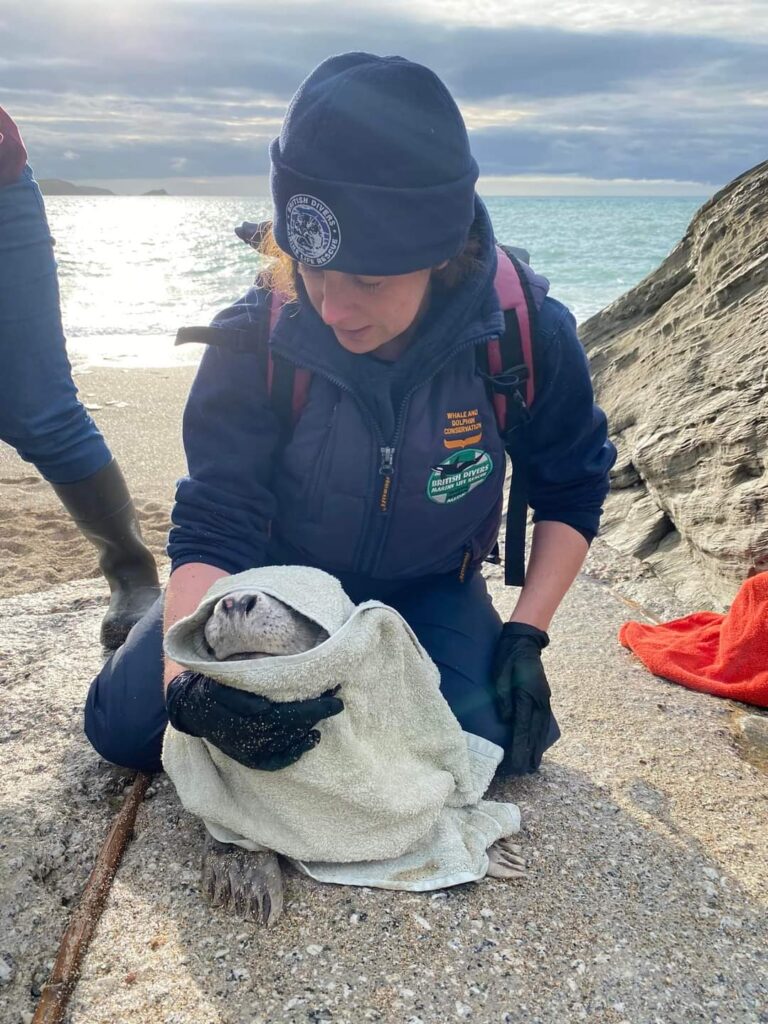
Jenny: Wildlife Guide
‘One of my favourite animals to spot on the boat is the minke whale. We don’t spot them nearly as much as we see seals and dolphins so it’s always such an exciting surprise when we do see them surface. They can grow up to 10 metres long so it’s amazing to know that something that big is swimming around our coast. Sometimes we can even smell them before we see them – their nickname “stinky minke” comes from their stale fishy breathe that carries in the wind as they exhale at the surface’!
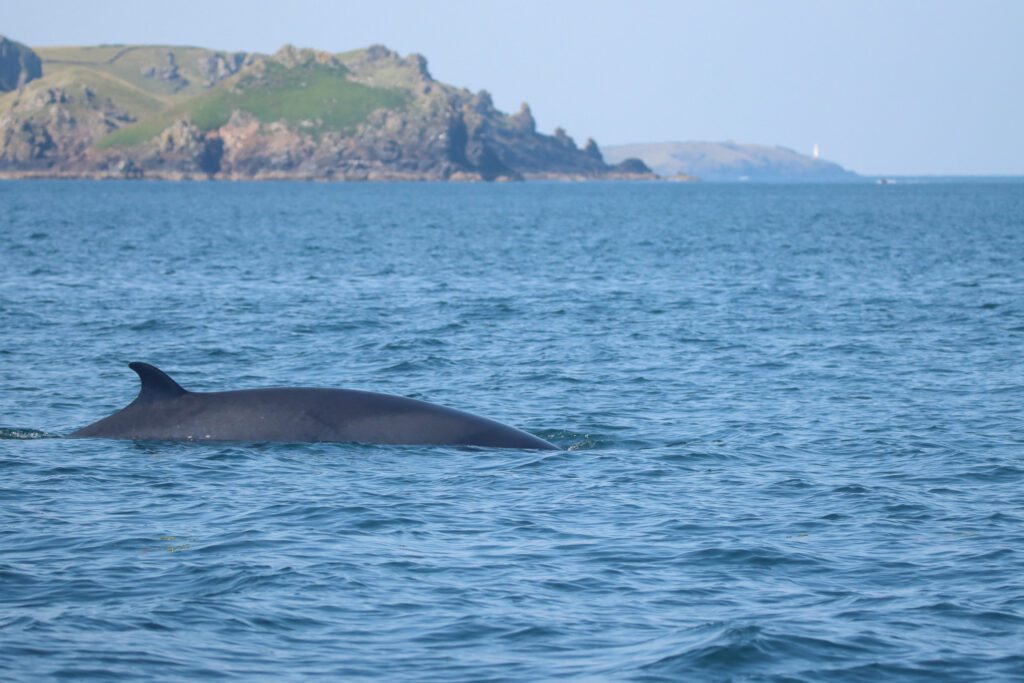
Ocean Sunfish
Ocean sunfish can be seen off the Cornwall coastline during the summer months while they bask in the warmer surface waters between deep dives to feed on jellyfish, cuttlefish and squid. This disc-shaped fish is easily spotted by their long dorsal fin which they often wave above the surface.
These cool creatures can weigh up to an astonishing 2,200kg and is the heaviest bony fish in the sea! They grow to their full size in warmer waters, so off our coast they are usually smaller, around the size of a dustbin lid.
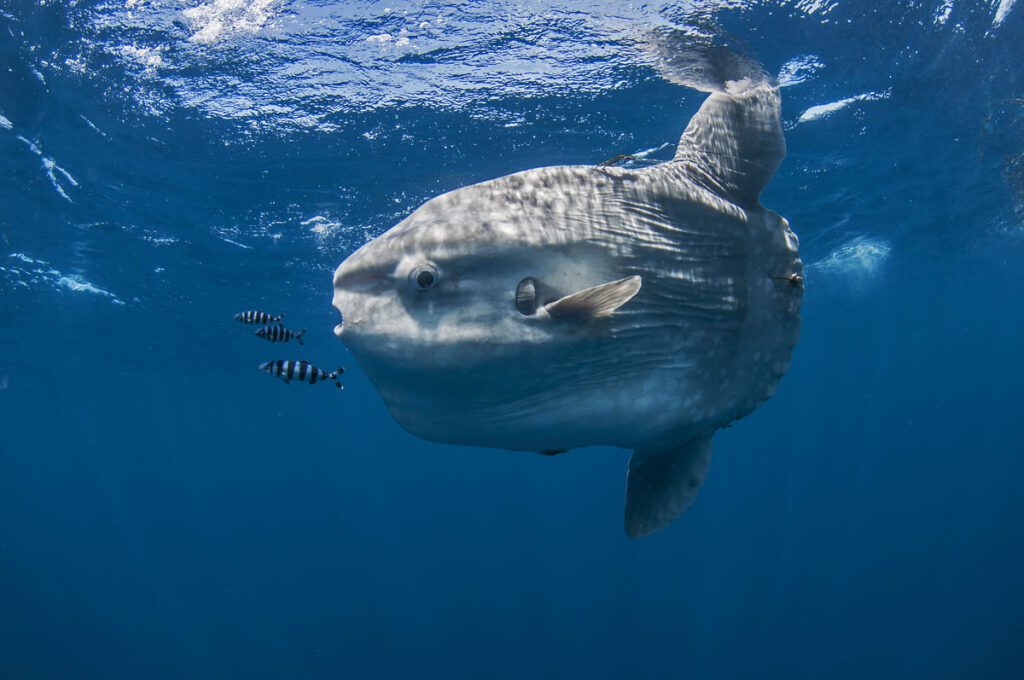
Oystercatchers
Oystercatchers are one of the most recognisable seabirds with their distinctive ‘peep’ which can be heard around rocky, muddy shores and some inland bodies of water. You’ll see these regularly on our boat trips, perched on rocky offshore islands often hearing them before you see them.
Identified by their black head, back and wings, white underside and pinky-red legs, but their most identifiable feature is their long, orange-red bill used to prize their way into mussels and cockles – surprisingly, they don’t actually eat very many oysters!
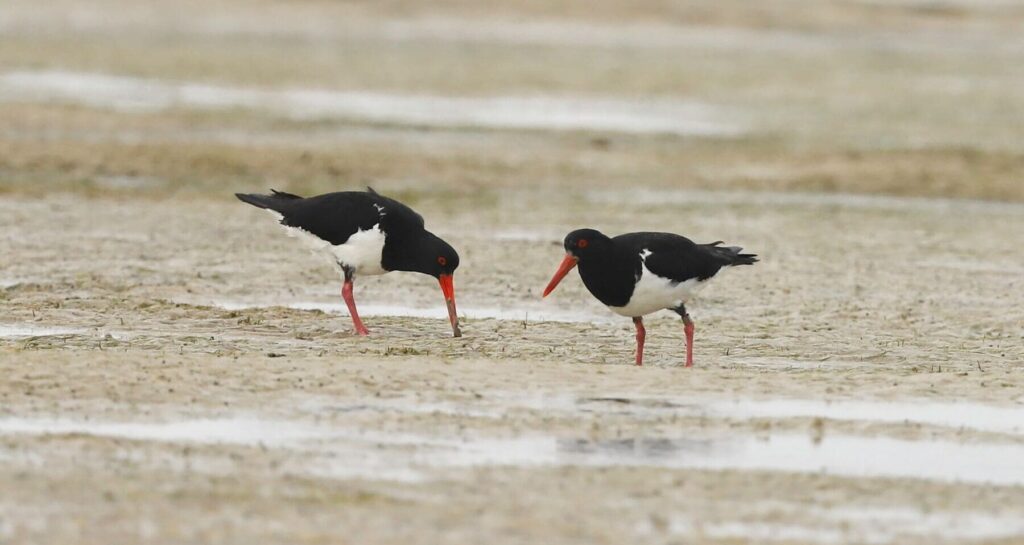
Basking Sharks
The basking shark, despite its size is one of the most placid shark species and is one of 3 plankton eating sharks. Basking sharks were once a common sight in the summers around Cornwall, feeding around headlands. However, the plankton that they feed on thrives in cool water, so as our coastal waters are warming, they are following the plankton offshore into deeper water.
Basking shark sightings around Cornwall are now a lot more rare and there is still so much about the lives of these illusive sharks that remains unknown. Although they are rarely spotted, there are still occasional sightings in this area, so you never know when you might get lucky!
